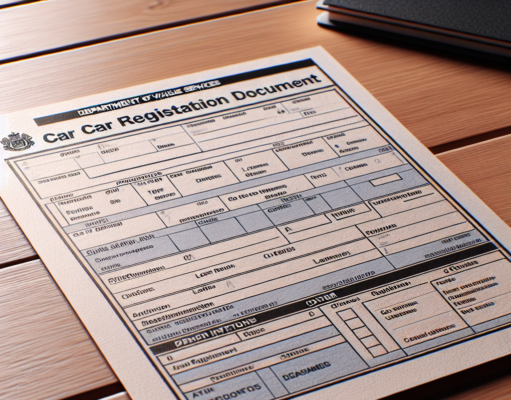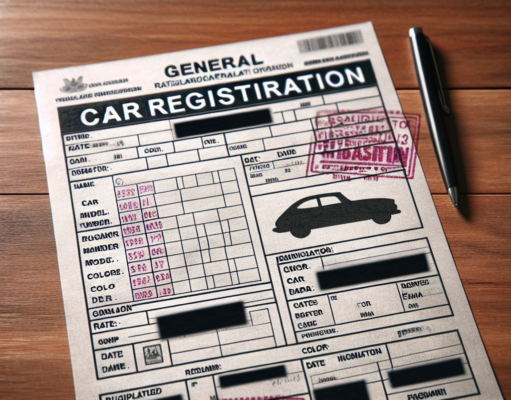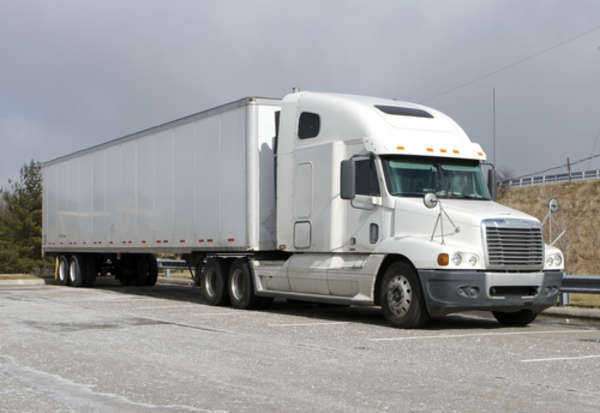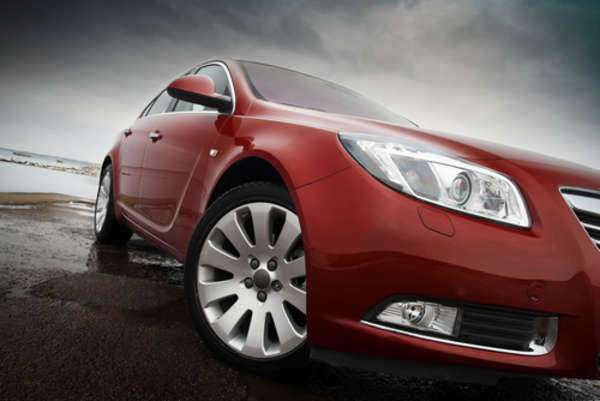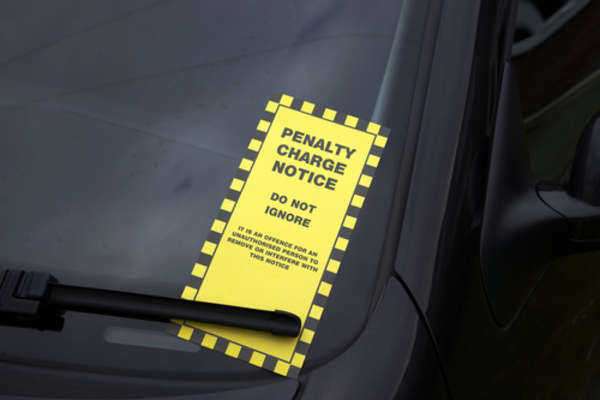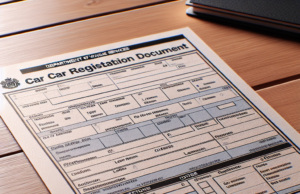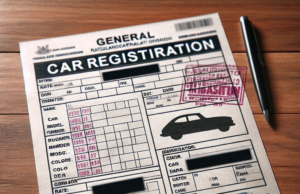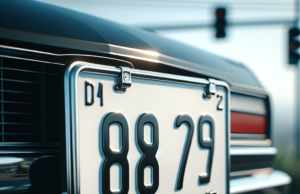
Many consumers wish to know how to buy used cars at the best possible price. Many also feel that car payments are unavoidable, so they might as well buy a newer car instead of choosing to buy used cars. There have been significant improvements in the quality of cars over the years, which means that well-maintained cars should stay reliable for at least 100,000 miles and ten years. The United States Department of Transportation states that the average life span of a motor vehicle is 128,500 miles or 12 years. However, surveys have shown that a person sells or trades in a car when it is only on average 4 1/2 years old with only 41,000 miles.
That means that there are a lot of potential vehicles to choose from when you buy used cars that have plenty of life left in them. When looking for a relatively new model, it can be a great deal to buy used cars that are the same style. About 20% of a new car’s monetary value is lost in the very first year of ownership, which means that if you buy used cars , you pay significantly less for a small about wear. Car accessories such as power assists, stereo systems, and other convenience options are also far less a factor when looking at resale pricing. In addition, by the time a motor vehicle is a couple of years old, small problems in the particular model should have been found and corrected.
Buy Used Cars: Choosing a Model
With the average cost of a new car going up every year, it is understandable that the quickest growing section of the automobile industry is the used car market. Over the last decade, used automobiles have become even better values. When you buy used cars, you can save thousands of dollars in comparison to buying new cars, especially when the price of new cars keeps going up. The first step to take when you buy used cars is to decide on the make, year, model and the options you want on the vehicle. Consider what you will be using the car for, for example if you are a student who needs an economical model, or if you need a family vehicle. You should also decide what accessories you would like to have or you need. After you decide to buy used cars and you choose a specific model vehicle, you should also think of other back up models as well.
If you are having difficulty choosing models before you buy used cars, you can take a look at Consumers Reports which publishes excellent information regarding both new and used cars. These reports include repair and maintenance information. You can narrow your choices of different vehicles as much as possible with this. You should make sure to note the following features of each vehicle when planning to buy used cars:
• Safety features
• Visibility
• Comfort
If you wish to check the “recall record” of a motor vehicle before you buy used cars, you can call the United States Department of Transportation Auto Safety Hotline toll-free at (800) 424-9393. The department will tell you if a particular model has ever been previously recalled and will send you any information regarding that particular recall. Additionally, you can you can obtain technical service or recall bulletins on different models online from different services.
Buy Used Cars: Price Guides
Many different price guides are used by dealers, lenders, and individuals to figure out the monetary value who sell or buy used cars. You can check the check the Official Used Car Guide from the National Automotive Dealers Association to find the book value on your trade-in vehicle. This book may also be found in local banks and credit unions or public libraries. The publication is released every month the National Automotive Dealers Association and with provides average loan, wholesale, trade-in, and retail prices for almost every car sold in the last seven years.
These publications are not intended to provide a definitive price for a vehicle, but rather to serve as a reference point when negotiating with the seller of the vehicle. The information found in the book can be also obtained at the reference section of your public library or through services which provide invoice prices for a small fee. You can look at classified ads in your local newspaper to figure out what advertisers in your local area are asking for the specific models when you buy used cars. The difference between retail and wholesale value will be your ideal bargaining range.
Buy Used Cars: Financing and Insurance
You can check with local credit unions and banks for financing options in order to make better comparisons with dealer financing when you plan to buy used cars. Be sure to figure out the amount that the credit union or bank will finance for a specific model vehicle. Also consider getting preapproved credit, which would get rid of dealer pressure on when you buy used cars. You should check your current insurance company for a price quote on particular vehicles when you buy used cars. You should consider whether you can afford the car payments and insurance payments and whether there is room in your budget for any unexpected vehicle repairs.
Buy Used Cars: Where to Buy
You can check with your local Consumer Affairs Office, Better Business Bureau, and other related government agencies for more information on automobile dealerships in your area. You should make sure that any dealers you plan to buy used cars from are licensed with the respective Division of Motor Vehicles of your state. You can also ask if the dealer belongs to any professional associations, such as local dealer associations or the Chamber of Commerce and how long the particular dealership has been in business.
When you buy used cars, you are making a major purchase, which requires proper comparison shopping for both price and value in order to find the best deal possible. There are many different sources to buy used cars from:
• New car dealerships
• Used car dealerships
• Leasing companies
• Rental car companies
• Private individuals
Buy Used Cars: Dealers
New car dealers usually only keep the best cars and will give them a very thorough inspection. Additionally, when you buy used cars you should consider purchasing from a dealer who can handle the particular brand you are interested in purchasing. You should look for full service departments who are well-stocked with parts for that model. These dealerships may also be able to offer a parts and labor warranty. You should visit several different automobile dealerships.
Buy Used Cars: Rental Companies
Rental returns, which are also called program cars, can also be an excellent value when you buy used cars. These cars are usually less than two years old, and are well maintained and equipped, with good warranties. When you buy used cars, you may want to look at luxury dealers for mid-priced sedans or domestic dealers for used imports.
Buy Used Cars: Private Parties
You can also buy used cars from private individuals. However, it may not necessarily be a better deal to buy used cars from a private party. Buyers might end up overpaying for a vehicle because somehow they assume it will be a better deal from the private party. One major benefit of purchasing from a private seller is that the buyer can meet the seller in person and ask about any mechanical problems the car may have, find out who was the main driver of the car, why it is being sold, and ask for maintenance records of the vehicle.
When buying a car from a private party, you must be cautious since there are no warranties. When you buy used cars from private parties, it is strictly “buyer beware”. Additionally, the buyers must provide their own financing pay cash for the vehicle.
Buy Used Cars: Inspecting the Car’s Exterior
Check the vehicle during the day as darkness can hide exterior problems. Make sure not to check out cars in the rain, which may hide scratches and nicks, as well as making worn, thin paint appear slick. You should concentrate on big defects rather than minor repairs which can be made inexpensively and easily.
You should also prepare a checklist for the interior as well as the exterior of the car and things when driving. Take a basic look around the exterior of the car. One practice that is very common is to have the car carefully detailed to increase the appeal. Usually this process includes a full cleaning inside and out, waxing the vehicle, and repairing minor cosmetic items that may hide the vehicle’s wear.
Look at both sides of the vehicle from a distance, in the front and the back. Check for waves, ripples, mismatched colors, and poorly fitted panels, all of which can indicate that work has been done on the body of the vehicle. Check for rust or dents near the bottom of the fenders and doors. Any bubbles along the chrome or molding indicate that there is rust underneath. Check under the vehicle for any rust as well. If it has gone through the metal, it can require major repairs.
Look for welding spots on the car’s frame which can indicate serious damages or repairs before you buy used cars. Open and close all of the doors, the hood, hatchback and the truck. Be sure all of them properly fit and are very easy to close without having to slam and without any sagging or sticking.
Stand back around 10 to 15 feet from the vehicle and check if the car is level. When one corner appears lower than the others, it may mean a broken spring or other suspension or chassis issues.
Before you buy used cars, check that the tires of the car are in good shape and do not have sidewall cracks. If there is uneven tire wear, it may mean that there are worn front end components, tired shocks, or improper wheel alignment. Additionally, you should check the inside of the tires in case there is brake fluid leakage, which indicates leaking wheel cylinders.
You can check the shocks by pressing down on each corner of the vehicle and then letting go. The car should only bounce upward once and then settle to the original position. If the vehicle bounces many times, the car may need new shocks.
When you buy used cars, you should check under the car for any oil spots, or leaks from the power steering, shock absorbers, or transmission. Open the hood and take a look at the belts and hoses for wear or cracks. Take off the radiator cap and check that the coolant is a clean, greenish (or yellow or blue, depending on coolant brand) color. If there is brown sludge in the radiator neck, it can indicate poor maintenance.
Take out the oil dipstick and check if the oil is grayish or gummy, which can indicate serious problems with the engine. If there is any black buildup near the very top of the dipstick, you should smell it. If it smells like it is burnt, this means the transmission or engine has been run hot. The automatic transmission fluid must not be black or brown, but rather reddish and clear in color. Low fluid level or the burnt smell indicates neglect. Be sure to also check the level of fluid in the master cylinder. If there is a low level, look for leaks and get the brake pads checked. Check the trunk for an inflated spare tire, a lug wrench, and a jack.
Buy Used Cars: Inspecting the Car’s Interior
The inside of a car can give you an idea of the overall condition of the vehicle and how well it has been maintained. You can check these before you buy used cars.
Look at the mileage of the car to check that it has been used a reasonable amount considering the asking price when you buy used cars. You should also compare the service stickers found under the hood or on the door jamb to check if the recorded mileage seems consistent with the vehicle’s odometer reading.
Before you buy used cars, check the seats, carpeting, and belts’ condition. Shoulder harnesses and lap belts should be in good shape without any rips, frayed webbing, or tears. The upholstery of the car should be clean without any large cracks or rips.
Check all the windows to see if they easily open and close. Manual windows should smoothly crank while power windows should not at any point hesitate. All glass should not have any serious scratches or cracks.
Check at the clutch, brake, and accelerator. These pedals must work smoothly without making any strange noises and without binding. Check exterior lights and flashers to ensure they work properly. Start the car’s engine and check the gauges and warning lights as well as all accessories to ensure they work properly. Ensure that the air conditioning can blow very cold air.
Check for the owner’s manual in the glove box. The manual has maintenance information and important information regarding fluid capacities, replacement parts, and engine tuning.
While a used car does not depreciate in value as quickly as a new car, it is still possible to get a “lemon” car. Be careful of extra and hidden costs, like rustproofing or extended warranties which you may not want to have.
Buy Used Cars: Add-Ons
There can be additional charges when you buy used cars, such as charges for processing paperwork, which are called conveyance fees. You should also be weary of credit insurance policies. These policies will pay off your loan if you die or become disabled. You cannot be forced to purchase insurance as a loan prerequisite.
Extended warranties are also generally offered to cover major parts such as the engine, transmission, or the transaxle, by manufacturers at an extra cost. These warranties can include a deductible which is paid by the owner. There are also “wrap-around” warranties and service contracts that are offered by warranty companies and manufacturers.
Buy Used Cars: Drive Test
When you buy used cars, you should check how the car drives. Start the engine and press the brake. The pedal should go down about an inch or two and must feel firm and solid, rather than spongy. Press on the brakes for an extended period to see if the pedal slowly sinks, which may indicate a master cylinder leak. As the car engine warms up, you should listen for noises such as ticking, rattles and knocks, which can indicate engine issues. Put the car in neutral and then rev the engine. Check in the rear view mirror for any smoke coming from the exhaust. White or bluish smoke can indicate that engine needs overhaul.
When idle, the car engine should be quiet and smooth. Punch the gas pedal to check if the car engine responds without any hesitation and then goes back to normal idle. When first starting, slowly drive to get a feel for the car. The automatic transmission should not jerk, slip or hesitate. A manual transmission should not grind, but rather shift smoothly between gears. The clutch should disengage and engage smoothly without chattering or grabbing. Drive on a smooth, flat road and slightly lift your hands from the wheel. The vehicle should be stable without vibration and track straight. If the vehicle pulls in either direction, front end repairs such as an alignment might be necessary.
To test the car’s brakes, accelerate to around 30 to 40 miles per hour in an area with no cars behind you, and step on the brake pedal hard, without locking the wheels. The brakes must grab evenly and the car should decelerate in a straight line. If the vehicle pulls to the right or left, it means the car needs a system re-build or a brake adjustment. A grinding noise means that there are badly worn pads or linings.
Next, accelerate to 45mph. If the front end of the car vibrates or shapes, the tires may need balancing. Quickly drive over a rough street and listen for loud rattles or squeaks. If the car bangs or bounces over small bumps, it indicates worn shock absorbers. After driving the car for a while, check for high reading on the temperature gauge or if the temperature warning light comes on. These can indicate cooling system troubles, which can be very expensive.
To test the response of the engine, accelerate hard on an empty street. The car should immediately respond. Stop and then hit the gas once more. There should not be any smoke or hesitation from the car and should smoothly accelerate without any strange noises. Check how well the car drives over steep hills. If you notice significant power loss while climbing, the car may require a tune-up or an overhaul. While on the hill, test the hand brake to ensure it holds the car. After finishing the test drive, it’s a good turn off the car for a few minutes and then restart the engine to check how well it turns on when hot. Check again for any leaks beneath the car and under the hood. Sometimes leaks will only show up after driving. Check the tailpipe for any sooty black oily deposits. If there is a powdery, white residue, it can indicate good fuel combustion.
Buy Used Cars: Checking for Odometer Fraud
A vehicle’s odometer reading is an accepted way of determining the monetary value of a car. If the vehicle is in unusually good condition, items may have been replaced because of excessive wear. Check for scratches on the dashboard or odometer, digits that are misaligned or stuck, or loosely fitting odometers when you buy used cars. Any of these can suggest odometer tampering.
If you think that the car’s odometer has been rolled back, contact your local Department of Motor Vehicles or local law enforcement agency. If you think odometer fraud has happened with a vehicle you have already bought, the Department of Motor vehicles can help you in finding a record of previous odometer statements from all dealers involved in the car’s history. If you find out that odometer fraud has occurred, you will have to hire an attorney to file suit against the fraud violator. Because of the importance of the car’s odometer reading in calculating the condition and value of a car, both state and federal laws make it illegal to tamper with the odometer. It is illegal to:
• Drive with the odometer disconnected or with a non-functional odometer
• Turn back the odometer
• Disconnect the odometer
It is against the law for anyone to sell a motor vehicle without giving a written statement of the actual vehicle mileage at the time of vehicle transfer. Exemptions from this include:
• Vehicles that are over 10 years old
• Vehicles that have a Gross Vehicle Weight Rating exceeding 16,000 pounds
• Vehicles that are not self-propelled
Buy Used Cars: Other Items to Check
Ask if the car has ever been in any crashes or accidents. Learn as much about the maintenance record and prior history of the car. If you are buying the car from a dealer, contact the car’s previous owner to verify the condition and mileage of the car. If the dealer refuses to provide information, take note of the vehicle identification number, which can be used to find out who the previous owners were.
The National Automobile Dealer’s Association can run title searches on a vehicle for a small fee, which is important when you buy used cars. The search will provide information regarding previous registrations and if the vehicle has been recalled, flood damaged, salvaged, or if the odometer has been rolled back.
Buy Used Cars: Mechanical Check
After you have thoroughly inspected the car, you should take the car to a trusted mechanic before you making a final decision when you buy used cars. When you buy used cars, the best place to inspect a car is at the dealership that services and sells that specific make of car. These mechanics will be knowledgeable with the car and will know what problems to check for.
If the vehicle does have any problems, ask the approximate cost for fixing these defects. Minor problems that can easily be fixed may be used to negotiate a lower selling price but a vehicle with any major problems must be avoided.
Buy Used Cars: As-Is or Warranty
By federal law, all car dealers are to adhere a “buyer’s guide” in the window of each car offered for sale. This guide notifies any potential buyer that there is a warranty on the vehicle or that the car is being sold “as-is,” which means there is no warranty on the vehicle of any kind.
When you buy used cars, you should be aware of whether you are buying an “as-is” car. After you drive the car from the dealership, it now belongs to you, despite any mechanical issues the car may have. If the car breaks down only after a few minutes of driving off the dealership lot, the repairs are now your responsibility.
The biggest and important difference between vehicles might not be in the extra equipment provided or under the hood, but instead is somewhere in the product packaging, or the Warranty Card. Although you may think nothing can or will happen to your newly bought vehicle, problems can and often do surface. The better the car’s warranty, the less you will have to pay for any unexpected repair bills.
When you compare warranty policies, longer policies are better. However, be aware of policies that have unrealistic requirements or are too long. You should be sure to ask the following questions regarding the vehicle’s warranty:
• Are all of the car’s parts covered under the warranty?
• Is there a co-payment for the warranty?
• Under the warranty, am I only allowed to have repairs done only at certain garages?
• Does the normal service need to be accounted for in the warranty?
• Can vehicle service be done at a repair shop of my choosing or only at certified repair shops which are designated in the policy? This can be particularly important if you live far away from repairs and service locations.
• If the warranty is misused, is coverage completely voided?
After you buy used cars, you should keep your warranty records safe with any other receipts. Make a copy of the warranty and keep it in a different location. While some companies are more relaxed, other will require you to provide the original warranty if you have to get repairs done. Be sure to be very specific in adhering to the warranty requirements of the manufacturer.
The federal Magnuson-Moss Warranty Act of 1975 requires that car warranties be available to read before you buy used cars. Unfortunately, many companies do not follow this requirement. While no reputable dealer will completely disobey this law, they may make their administrative procedures for getting this information incomplete. Under the federal law, you may sue these companies based on breach of the express warranties, implied warranties or a breach of the service contract.
Essentially, when you buy used cars you should carefully read the warranties and the fine print. Be sure to get copies of all documents you sign. Make sure that any other documents you sign are the same as what you agreed to. There have been situations where a “buyer’s guide” states that there is a warranty, but the actual contract states an “as-is” transaction. In this situation, government agencies will call this transaction an “as-is” sale. All warranties and agreement are only valid if they are in writing and are signed by all involved parties.
Buy Used Cars: Caution with Paperwork
You should not sign any blank forms under any circumstances. You should get copies of all signed paperwork that are involved in the sale of the vehicle at the time of preparation. Make sure not to lose control of the vehicle’s title during a trade.
In many situations, once the deposit is made, the customer can lose the deposit if he or she changes his/her mind and chooses not to buy the used car. When buying used cars, make sure that your contract and/or your receipt specifies a refundable initial deposit. Also make sure that you fully understand all the terms discussed in the contract.
Many contracts when you buy used cars are written pending the credit application. Deposits are often made with credit application fees. The trade-in value of a vehicle is provided and the car purchased is then brought home. The credit application is may then be processed and denied. In this case, the application can then be processed once more with another agency through the car dealership, but it will be done at a higher interest rate. Because of this, make that you get everything you agreed on regarding terms and interest rate if you are denied credit when you buy used cars. Check to see if the dealership has a license to finance vehicles by verifying with the Division of Banking & Finance if you have any concerns or questions.
After you buy used cars, have the vehicle seller write a receipt that is marked “Paid in Full.” This receipt must include the vehicle identification number, model, make, the buyer’s name, the seller’s name, and the amount paid for the vehicle.
Buy Used Cars: Tax, Tag and Title
Dealers are only allowed to charge the actual amount of fees when charging for tags, title transfer, and taxes. Normally, these fees are not included in the purchase contract when you buy used cars. However, sometimes dealers will charge a handling or processing fee. If they do so, this fee must be disclosed separately. You should make sure you properly understand all the terms of your contract.
A licensed dealer is required by law to transfer the title and tags within 30 days. If a car dealer issues a second temporary tag for the vehicle, the buyer should start asking questions regarding the delay in transfer. If the car dealer issues another temporary tag after the second, the seller should contact their local Division of Motor Vehicles immediately, since they may be illegal depending on the state and jurisdiction.
You should make sure you have proof of insurance for the car. Most states require vehicles that are licensed within the state to have some sort of liability insurance that is accepted within the state. Without providing proof of insurance when you buy used cars, the dealer will not be able to complete the transfer of the car’s title and
registration into the buyer’s name.
Buy Used Cars: Declining Value
Nearly every car loses value as time goes on. Large luxury cars as well as subcompacts tend to lose value at the quickest rates. Domestic cars usually depreciate faster than their comparable imports.
Used cars that have the highest resale value are often the best-selling new car models, particularly when they have desirable options such as power steering, cruise control, and air conditioning. If you wind up paying a bit extra than you had expected for the perfect used car, it is not a big concern. In the long run, you will be much better of having a car that you are happy with rather than one that was a bit cheaper.


